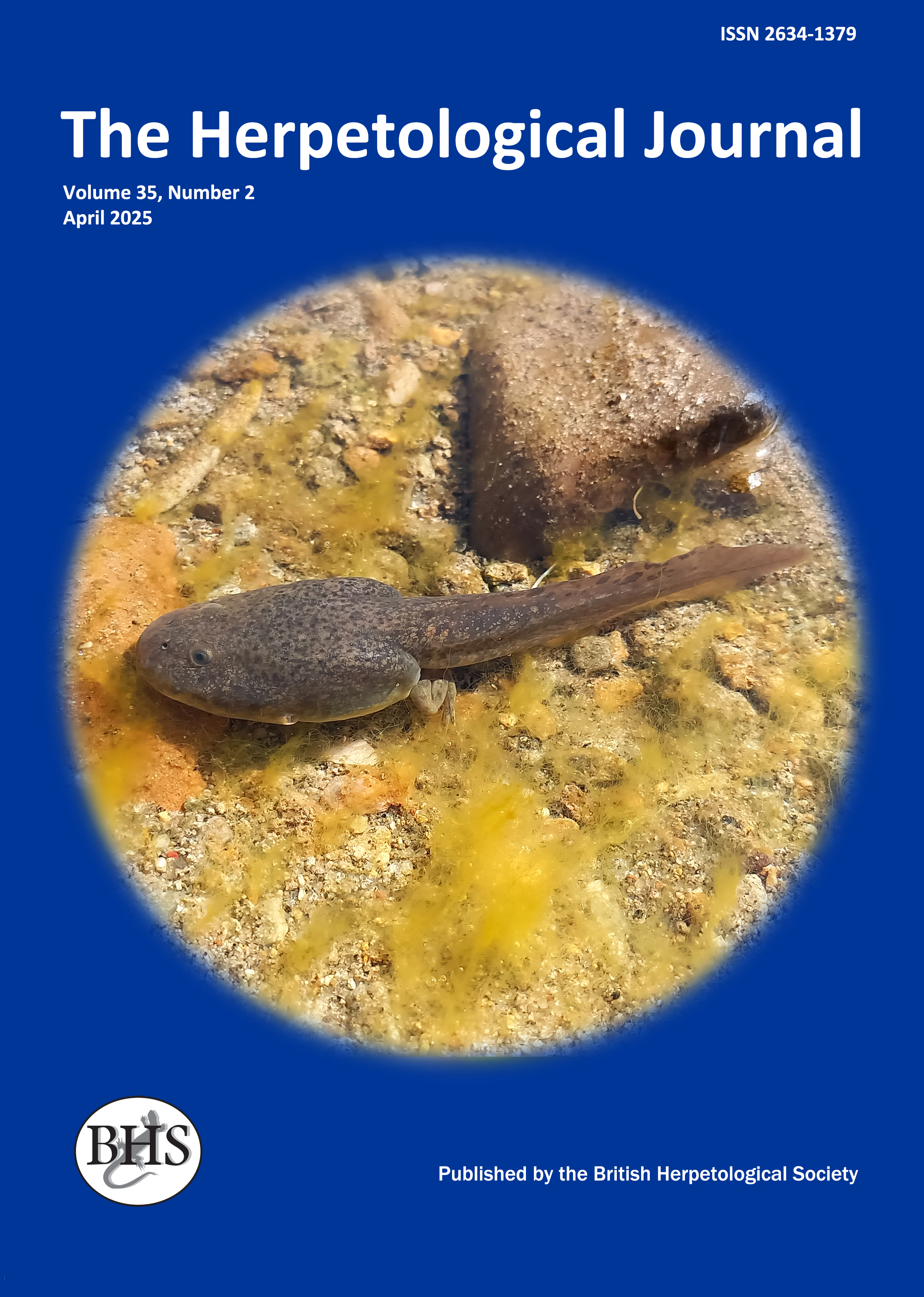
The Herpetological Journal
The Herpetological Journal is the Society's prestigious quarterly scientific journal. Articles are listed in Biological Abstracts, Current Awareness in Biological Sciences,Current Contents, Science Citation Index, and Zoological Record.
ISSN 0268-0130
2021 Impact Factor from Clarivate for the Herpetological Journal is 1.194, an increase of 0.332 from 2020.
pdf 06. Reproductive ecology of Orinoco crocodiles (Crocodylus intermedius) in a newly established population at El Frío Biological Station, Venezuela
1631 downloads
Open Access
pp. 51-58
Authors: Antelo, Rafael; Ayarzagüena, José & Castroviejo, Javier
Abstract: We present data on the reproductive ecology of the Orinoco crocodile (Crocodylus intermedius) in a newly established population at the El Frío Biological Station, Venezuela, from 2003 to 2007. Nesting occurs during the dry season, and hatching of young takes place at the beginning of the rainy season. Elliptical hole-like nests are constructed in artificial sand beaches with a median nest depth of 42.6 cm. Nest depth is positively correlated with female total size, enabling us to predict the size of the female based on nest characteristics. Temperature in the egg chamber was on average 31.9 °C. The thermal amplitude of the nest was positively correlated with nest depth, and less than 1.3 °C when the nest was deeper than 30 cm. The average clutch size was 41.2 eggs, the average clutch mass was 4256.2 g, and egg viability was 75.4%. The average length, width and weight of eggs was 7.61 cm, 4.73 cm and 111.07 g, respectively. As part of the conservation programme, we also artificially incubated eggs from the species. Hatching rate in the incubator was 84.3%. Total length and mass at hatching were 28.6 cm and 66.9 g, respectively. Our data demonstrate that head-starting our population through egg incubation is a suitable conservation strategy for this endangered species.
Keywords: HEAD-STARTING, MANAGEMENT, CONSERVATION, REINTRODUCTION

